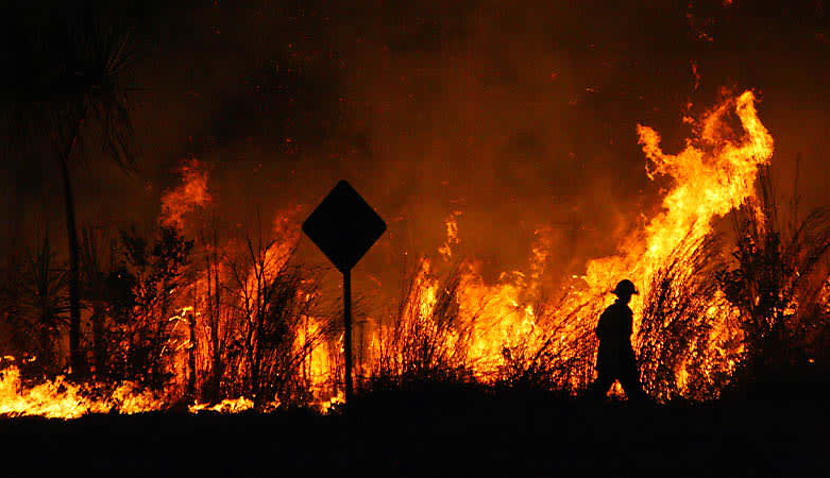The plan, overseen by the newly formed Earth Fire Alliance, will also use AI to quickly compare recent images of forests to those taken outside of bushfire season.
It’s hoped the twin advancements will mean firefighters can extinguish the flames shortly after ignition and before they have a chance to spread out of control.
Google climate research lead Christopher Van Arsdale said the new constellation would help fill a “huge gap” in the data currently available.
“When we designed the satellite constellation, and we were looking at its capabilities, certainly the bushfires in Australia were part of the design requirements,” he said.
“We are going to make this data as broadly available as possible.”
The FireSat plan, first announced in May, will launch its first spacecraft early next year and aims to eventually provide “near real-time” information on the size, location and intensity of early-stage wildfires.
The tech giant argues that current early detection satellites can only detect fires the size of two football fields, at which point they are harder to put out.
“With FireSat, authorities will have high-resolution imagery that is updated globally every 20 minutes, helping them respond to fires before they become destructive,” Google said.
“To kickstart this work, Google.org provided $13 million [USD] in funding to the initiative led by the Earth Fire Alliance, a non-profit established to launch the FireSat constellation, with additional support from the Moore Foundation.
“To achieve this breakthrough in wildfire detection, the Google Research team contributed to the development of custom infrared sensors for the satellite – in partnership with Muon Space and the Environmental Defense Fund – that could better detect small-scale fires.
“Using AI, FireSat will rapidly compare any 5x5 metre spot on Earth with previous imagery while also combining factors like nearby infrastructure and local weather to determine if there’s a fire.
“To validate our detection model for smaller fires and establish a baseline dataset for the AI, we flew the sensors over controlled burns.”
Earth Fire Alliance executive director Brian Collins said the first satellite would collect data during 2025’s bushfire season and share it with Australian early adopters.
“Operationally, our biggest impact to Australia will be in the 2026 time frame when we launch our next three operational satellites,” he said.
The Earth Fire Alliance’s plan is one of many proposed in recent years to use space to alleviate tough bushfire seasons.
In June, for example, Space Connect reported how Australian researchers pioneered a new technique that can detect bushfires from space “500 times faster” than traditional monitoring.
The project, led by the University of South Australia (UniSA) and funded by SmartSat CRC, uses AI onboard CubeSats.
The technology will also take advantage of a hyperspectral imager, a device that analyses the composition of materials on Earth from space.

Adam Thorn
Adam is a journalist who has worked for more than 40 prestigious media brands in the UK and Australia. Since 2005, his varied career has included stints as a reporter, copy editor, feature writer and editor for publications as diverse as Fleet Street newspaper The Sunday Times, fashion bible Jones, media and marketing website Mumbrella as well as lifestyle magazines such as GQ, Woman’s Weekly, Men’s Health and Loaded. He joined Momentum Media in early 2020 and currently writes for Australian Aviation and World of Aviation.

